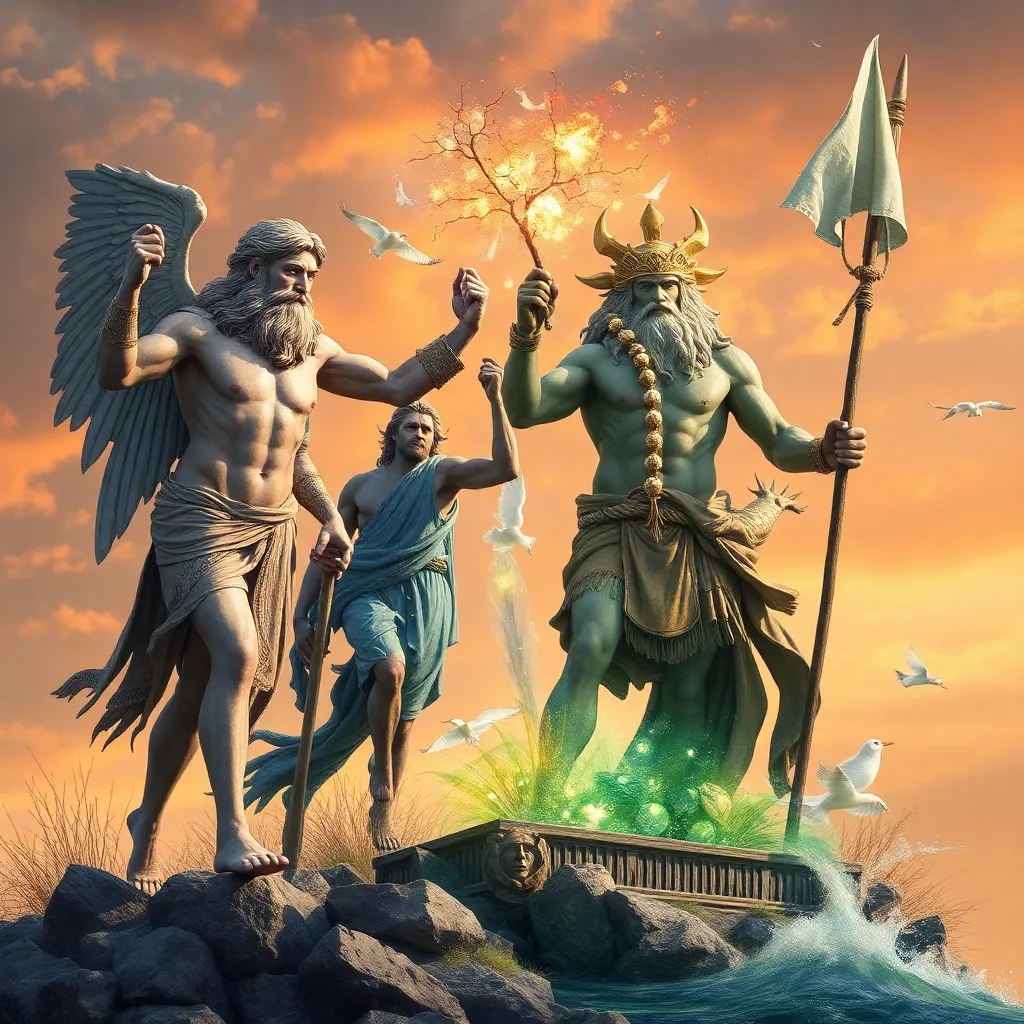The Titans and Their Connection to Nature and the Elements
I. Introduction
The Titans, in ancient Greek mythology, are often regarded as the powerful deities that predate the Olympian gods. These colossal figures represent various aspects of the natural world and are integral to understanding the Greeks’ view of nature and the cosmos. The significance of the Titans extends beyond mere mythology; they embody the elemental forces that shape our environment and influence human life.
This article aims to explore the Titans’ connection to nature and elemental forces, highlighting their roles in the primordial world and their lasting impact on both ancient cultures and modern interpretations of mythology.
II. The Origins of the Titans
The Titans are the offspring of Uranus (the sky) and Gaia (the Earth), representing the foundational elements of the universe. They are part of a complex genealogy that includes various primordial deities and later generations of gods. The Titans were born into a world that was still forming, and they played a crucial role in its development.
In many myths, the Titans are depicted as the rulers of the universe before the rise of the Olympian gods. Their connection to the Earth and cosmos is foundational, as they symbolize the raw, untamed forces of nature that govern the world.
III. Titans Representing Natural Elements
Several Titans are closely associated with specific elements of nature. Here are a few key figures:
- Oceanus – The embodiment of the ocean, Oceanus represents the vast, flowing waters that surround the earth. He is often depicted as a river encircling the world, symbolizing the life-giving and destructive powers of the ocean.
- Gaia – As the Earth itself, Gaia is the mother of all life and a central figure in many creation myths. She is often depicted as nurturing and fertile, representing the strength and resilience of nature.
- Hyperion – The Titan of light and the sun, Hyperion embodies the illuminating and life-sustaining aspects of sunlight. He represents the celestial forces that govern the day and the natural rhythms of life.
These Titans, among others, serve as personifications of the elements, illustrating their influence on the natural world and the phenomena that arise from them.
IV. Titans and Natural Forces
The Titans are often seen as personifications of various natural forces, each embodying specific aspects of the environment. Notable examples include:
- Tethys – The Titaness of the nourishing aspect of water, Tethys represents the life-giving qualities of rivers and oceans. She is often associated with the nurturing flow of water in nature.
- Crius – The Titan associated with the power of the stars, Crius symbolizes the celestial forces that influence the natural world, including the cycles of day and night.
Mythological stories often illustrate the elemental powers of these Titans, showcasing their influence over natural phenomena such as storms, earthquakes, and the changing of the seasons.
V. The Role of Titans in Creation Myths
The Titans played a significant role in various creation myths, contributing to the formation of the world and its elements. They are often depicted as the architects of the universe, working alongside other primordial deities to shape the earth.
Their relationships with other primordial beings—such as Chaos, Nyx, and Erebus—further emphasize their importance in the cosmic hierarchy. The actions of the Titans not only shaped the physical world but also established the balance of nature, highlighting their influence on the environment.
VI. The Titans in Art and Literature
Throughout ancient history, the Titans have been depicted in various forms of art and literature. They are featured prominently in Greek pottery, sculptures, and epic poems, often symbolizing the raw forces of nature.
Some key aspects of their representation include:
- Depictions in Art – Ancient artists often portrayed Titans as colossal figures, embodying strength and power. Their representations in friezes and sculptures capture the grandeur of their elemental connections.
- Symbolism in Literature – In literary works, the Titans are often used as metaphors for the uncontrollable forces of nature, reflecting humanity’s struggle against these primordial powers.
- Modern Interpretations – Contemporary adaptations of Titan mythology often explore themes of environmentalism and humanity’s relationship with nature, reflecting the enduring relevance of these ancient figures.
VII. Legacies of the Titans in Contemporary Culture
The influence of the Titans extends into contemporary culture, where they serve as powerful symbols of natural forces. Their legacies can be seen in:
- Modern Environmental Narratives – The Titans symbolize the elemental forces of nature, prompting discussions about environmental stewardship and respect for the natural world.
- Popular Media – Titans appear in various forms of media, including films, video games, and literature, often representing the struggle between humanity and the elemental forces of nature.
- Ecological Discussions – The myths of the Titans resonate with current ecological issues, reminding us of the interconnectedness of all life and the importance of preserving the natural environment.
VIII. Conclusion
The Titans hold a significant place in Greek mythology, embodying the elemental forces of nature and illustrating humanity’s complex relationship with the environment. Their connections to the earth, ocean, light, and other natural phenomena provide a framework for understanding the balance of nature and the importance of respecting these forces.
As we reflect on the enduring legacy of the Titans, it becomes clear that their stories are more than just myths; they serve as a reminder of our responsibility to appreciate and protect the natural world that sustains us.




